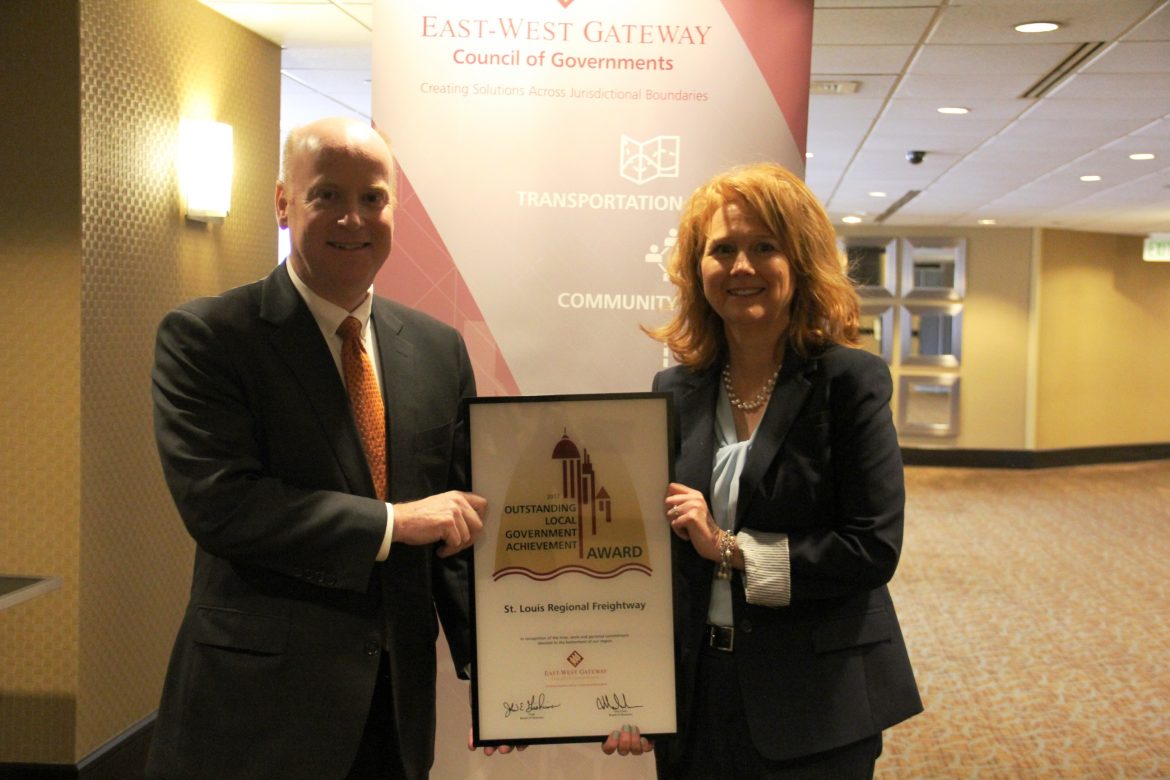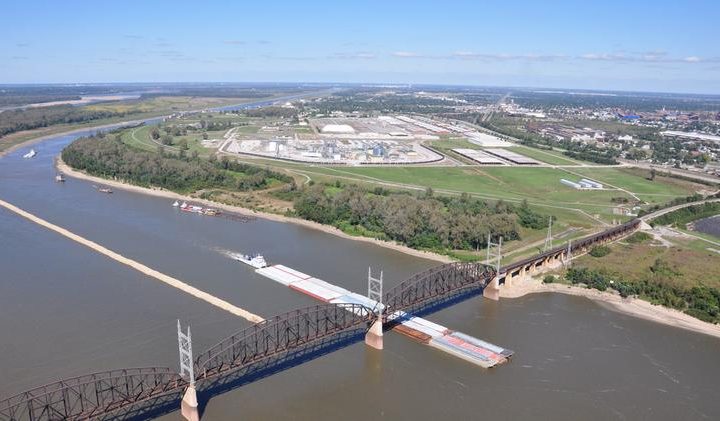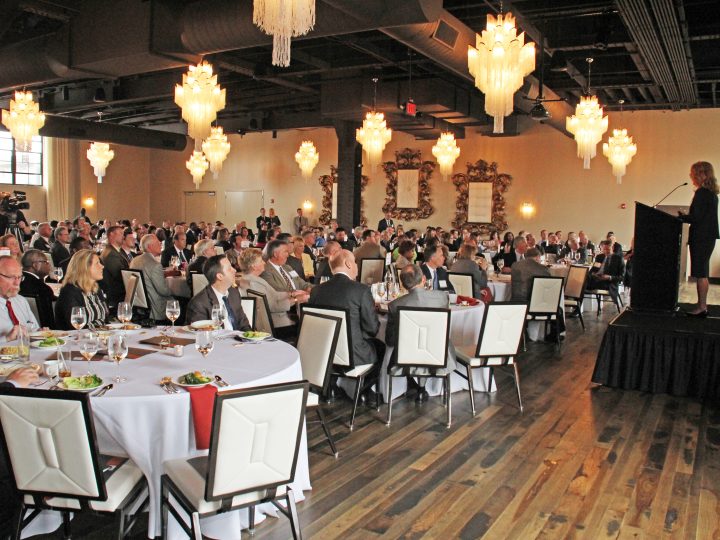
The East-West Gateway Council of Governments presented the St. Louis Regional Freightway with a 2017 Outstanding Local Government Achievement Award (OLGA) for Exemplary Intergovernmental Collaboration at its annual meeting on November 17. Each year, East-West Gateway honors the extraordinary work of municipal, county, special purpose and public educational officials who deliver positive contributions to the St. Louis region. The St. Louis Regional Freightway was recognized for the critical role it plays in optimizing the region’s network of freight transportation infrastructure, and advancing the bi-state area’s position as a premier freight gateway and multimodal hub.
“Our mission is to bring the entire region together to build a comprehensive approach to freight management and infrastructure,” said Mary Lamie, Executive Director of the St. Louis Regional Freightway. “Receiving this award from East-West Gateway is truly an honor and validates the hard work of everyone, from elected officials on both sides of the Mississippi River to competing businesses, who are collaborating with us to establish the St. Louis region as a world-class freight center right here in the heartland of America. ”
“This recognition is very rewarding,” said John Nations, President and Chief Executive Officer of Bi-State Development. “It recognizes a tremendous amount of work Mary and her team have contributed and the amazing progress they have made in a very short time to bring people together, build partnerships and create a plan that will lead to economic success for the entire bi-state region.”
The St. Louis Regional Freightway was officially launched in April 2016, and in less than 18 months, has made major strides to ensure the region is prepared to take full advantage of a 45 percent growth in national freight volume projected over the next 25 years. Notable achievements include:
Establishing Regional Infrastructure Priorities
The Freightway was able to develop and build consensus – uniting local governments, Class I railroads, port and barge industries, and other stakeholders in regional freight – around a list of 20 priority projects necessary to modernize the region’s freight infrastructure. On the strength of its unanimous regional approval, the infrastructure priority list earned the backing of both the Illinois and Missouri federal congressional delegations, vaulting regional priorities into national priorities.
Developing Partnerships
Over the past 12 months, the Freightway has produced new and stronger relationships with freight partners around the nation, including in Kansas City, Memphis, Minneapolis, Chicago, and most notably the Port of New Orleans. The Freightway entered into a Memorandum of Understanding in February 2017 with the Port of New Orleans – located at the center of the world’s busiest port system – to exchange market and operational information with the goal of growing trade, building new relationships and developing joint marketing efforts.
Marketing the St. Louis Region
The Freightway is actively reaching new freight markets and customer bases by highlighting the St. Louis region’s manufacturing and logistics advantages, including:
- The country’s third largest inland port, and the northernmost ice-free/lock-free access on the Mississippi River to and from the Gulf of Mexico
- Four interstate highways with national access
- Five airports with capacity, including two international cargo with rail access, foreign trade zones and available land for development
- The nation’s third largest rail hub served by six Class I railroads
One of the Freightway’s newest initiatives is highlighting the St. Louis region as the “Ag Coast of America”, as one 15-mile stretch of the Mississippi River in the St. Louis area delivers the highest level of grain barge handling, and is strategically positioned to handle the projected increase in freight volume. This marketing campaign includes online, social and media outreach with national and local business journals, trade publications and other periodicals.




